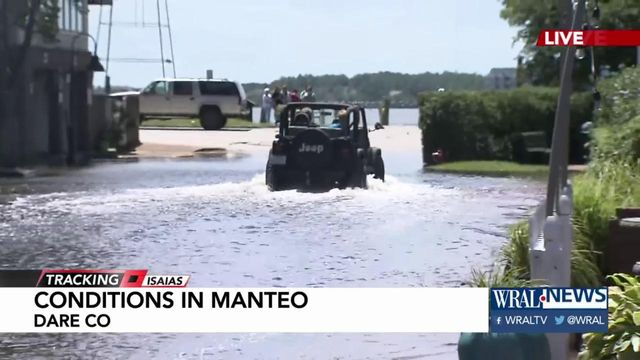NC cities get 'dry run' in preparing for hurricane during a pandemic
What do we do when the next big storm comes -- another Hurricane Florence or Matthew? Many communities did not experience the immense flooding or damage they prepared for ahead of Hurricane Isaias -- and that preparation provided a great 'dry run' for how to prepare for a hurricane during a pandemic.
Posted — UpdatedAlthough hurricane season extends from June through November, the first week in August is very early for a hurricane to hit North Carolina.
While some communities did experience tragic loss of life and property from tornadoes and even fire, others are breathing a sigh of relief – and trying to learn from the experience.
How to prepare hurricane shelters during COVID-19
Although Cumberland County didn't have to open any shelters during the storm, Booth said his team was able to do a practice run, which allowed them to stockpile supplies to prepare for September or October when larger hurricanes could come through.
How to prepare for flooding during the pandemic
As the sun came out Tuesday and the waters began receding, many communities also breathed a sigh of relief that Hurricane Isaias did not bring immense damage to their areas.
The fire chief for Nag's Head said they anticipated water on the roads and were prepared ahead of time.
In Manteo, some downtown roads were flooded, and some homes by the side of the sound had water rushing up very close to their yards. Police blocked off the flooded roads, and the water receded quickly. Sir Walter Raleigh Street was covered with water, but within a matter of hours it was dry.
In the aftermath of Isaias, children played in the flooded streets, sliding on body boards and riding bicycles through the water, while families stood on raised decks, watching the flood waters recede.
Hatteras Island reopened at 2 p.m., but officials warn drivers to be careful on Highway 12, where not all the water has receded.
Like many communities, Goldsboro saw heavy rain, wind gusts of around 50 mph, a few downed trees and some power outages. Nash, Edgecombe and Wilson counties have also seen devastating impacts in the past, but fared well this time.
The area around the creek has been built up to help prevent the water from rising. However, Isaias only dropped a few inches of rain on Cumberland County. A hurricane like Matthew or Florence could drop 10 inches or more, bringing more intense flooding.
The real question: What do we do when a real big storm comes? The hurricane season is still young, but a 'smaller' storm like Isaias provided a chance to learn how to operate in a pandemic, without also having to content with a real statewide disaster – this time.
How to handle hurricane clean-up during a pandemic
A power pole on Emerald Drive split in half. Heavy wind and gusts prevented crews from going up in bucket trucks to get a closer look until after noon.
Despite all the outages, the impact from Isaias was still less than previous, larger hurricanes. Some locals were quoted calling Isaias "a baby hurricane," when explaining why they were not evacuating.
While Hurricane Isaias was damaging – bringing floods, downed trees, power outages and even loss of life – it certainly could have been much worse, when compared with some of the more powerful storms that have hit NC through the years.
North Carolinians know how to manage themselves in a hurricane, but adding a pandemic to the mix meant certain long-standing operations and procedures would have to change. Hurricane Isaias may have just helped emergency crews become better prepared for whatever storms may impact NC later this year.
Related Topics
• Credits
Copyright 2024 by Capitol Broadcasting Company. All rights reserved. This material may not be published, broadcast, rewritten or redistributed.






